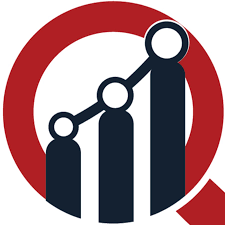The Digital Banking market share is undergoing a transformative shift, propelled by technological innovation, changing consumer behavior, and increased demand for seamless financial services. Digital banking refers to the digitization of traditional banking services through internet and mobile platforms, enabling real-time access to accounts, transactions, and value-added services without the need for physical branch visits.
As of 2025, the global digital banking market share is estimated to be worth over USD 15 trillion in transaction value, with strong double-digit growth expected through 2030, driven by increased mobile penetration, fintech innovation, and regulatory support for digital transformation.
Key market share Drivers
-
Rise in Mobile and Internet Penetration
Global smartphone usage and internet access continue to expand, especially in emerging market shares, creating a fertile ground for mobile-first banking models. -
Consumer Demand for Convenience and Speed
Digital banking enables instant fund transfers, loan approvals, bill payments, and investment management—fueling adoption across demographics. -
Cost Efficiency for Banks
Shifting to digital platforms significantly reduces operating costs related to branches, staff, and paperwork. -
Fintech and Challenger Banks
Digital-only banks and fintech platforms are reshaping customer expectations through innovative, user-friendly services and personalized banking experiences. -
COVID-19 Accelerated Digital Adoption
The pandemic acted as a catalyst for digital banking uptake, forcing both consumers and institutions to embrace remote and contactless banking solutions.
market share Segmentation
By Type:
-
Retail Digital Banking
-
Corporate Digital Banking
-
Investment Digital Banking
By Service:
-
Payments
-
Loans
-
Deposits
-
Wealth Management
-
Insurance
-
Others
By Deployment:
-
On-Premise
-
Cloud-Based
By Region:
-
North America
-
Europe
-
Asia-Pacific
-
Latin America
-
Middle East & Africa
Regional Insights
-
North America leads in digital banking innovation with strong adoption of mobile banking and neobanks.
-
Europe has matured regulatory frameworks like PSD2 and open banking, fostering competition and API-driven services.
-
Asia-Pacific is the fastest-growing region, led by China, India, and Southeast Asia, where digital wallets and UPI-style payment systems dominate.
-
Latin America and Africa are emerging as hotbeds of digital banking due to underserved populations and mobile-first economies.
Key Challenges
-
Cybersecurity and Data Privacy
As digital banking grows, so does the risk of fraud, phishing, and data breaches, necessitating stronger security frameworks. -
Regulatory Compliance
Navigating diverse global regulations around KYC, AML, data localization, and digital identity is complex. -
Digital Inclusion
Bridging the digital divide remains a challenge in rural and low-income areas with limited tech access. -
Legacy System Integration
Many traditional banks struggle to seamlessly migrate from legacy infrastructure to modern digital platforms.
Key Players
Some of the leading players shaping the digital banking landscape include:
-
JPMorgan Chase
-
Bank of America
-
HSBC
-
Citibank
-
BBVA
-
Revolut
-
Monzo
-
Chime
-
Nubank
-
Paytm Payments Bank
-
N26
-
Starling Bank
These players are investing heavily in artificial intelligence, biometric authentication, blockchain, and customer analytics to enhance service delivery and user engagement.
Future Outlook
The Digital Banking market share is poised for exponential growth as financial institutions continue to innovate and adapt to evolving customer expectations. The future of digital banking will likely revolve around:
-
Hyper-personalized financial services using AI and big data
-
Integration of digital banking with embedded finance ecosystems
-
Increased collaboration between traditional banks and fintech startups
-
Expansion of digital identity and e-KYC technologies
-
Inclusion of blockchain and decentralized finance (DeFi) features
By 2030, digital banking will no longer be an alternative—it will be the default for how individuals and businesses manage their finances.
read more
| China IoT Sensor market share |
| Brazil IoT Sensor market share |
| APAC IoT Sensor market share |
| UK Home Theatre market share |

